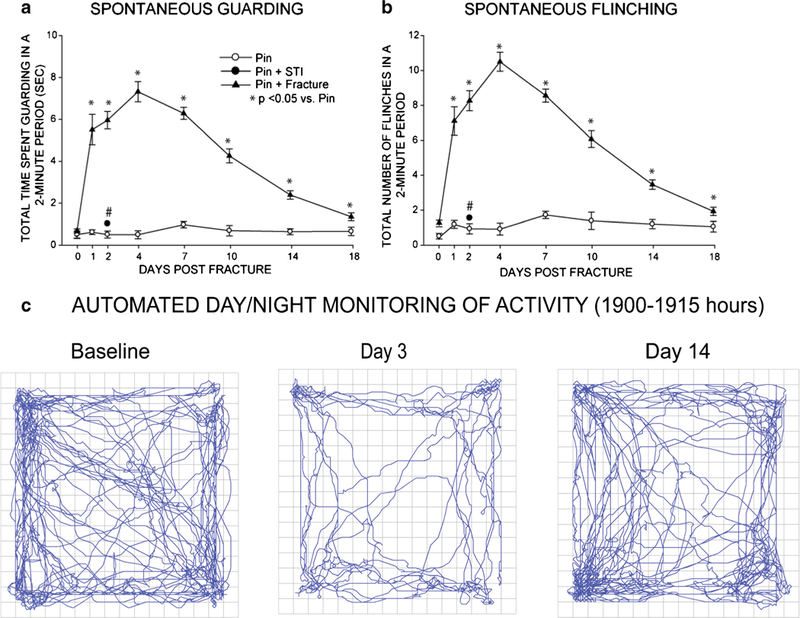Fig. 2.

Quantification of pain-related behaviors following bone fracture. Bone fracture pain can be assessed by measuring spontaneous guarding (a) and spontaneous flinching (b) of the right hindlimb over a 2-min observation period during the day. Pain behaviors can also be assessed by using 20 h day/night activity monitoring of horizontal (c), vertical and velocity of movement of the mice following fracture. The pictographs in (c) show the spontaneous horizontal activity at baseline (1 day prefracture), day 3 post-fracture, and day 14 post-fracture. In general, in young mice, if effective bone healing occurs, fracture-induced pain-related behaviors peak at 1–4 days post-fracture and return to baseline by day 21 days post-fracture. Note that in mice, placement of the stainless-steel pin or impactor-induced soft tissue injury (STI) alone with no bone fracture shows little change in either spontaneous guarding (a) or flinching (b)
